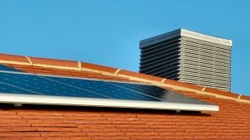Global warming is the rise in the average temperature of Earth’s atmosphere and oceans since the late 19th century, and its projected continuation. Earth’s climate is mostly influenced by the first 6 miles or so of the atmosphere which contains most of the matter making up the atmosphere. This is really a very thin layer if you think about it.
Warming of the climate system is unequivocal, and scientists are more than 90% certain that it is primarily caused by increasing concentration of greenhouse gases produced by human activities such as deforestation and the burning of fossil fuels.
The most significant greenhouse gas is actually water vapor, not something produced directly by humankind in significant amounts. However, even slight increases in atmospheric levels of carbon dioxide (CO2) can cause a substantial increase in temperature.
Global Warming Impacts:
· Rising seas
· Changes in rainfall patterns}increased likelihood of extreme events
· Melting of the ice caps
· Melting glaciers
· Widespread vanishing of animal populations
· Spread of disease
· Bleaching of Coral Reefs due to warming seas and acidification due to carbonic acid formation
· Loss of plankton due to warming seas
However, in reality, we will need to work on all fronts- 10% here, 5% here, etc., and work to phase in new technologies, such as hydrogen technology, as quickly as possible. To satisfy the Kyoto protocol, developed countries would be required to cut back their emissions by a total of 5.2 % between 2008 and 2012 from 1990 levels. Specifically, the US would have to reduce its presently projected 2010 annual emissions by 400 million tons of CO2. One should keep in mind though, that even Kyoto would go little ways toward solving the problem. In reality, much more needs to be done.
Warming of the climate system is unequivocal, and scientists are more than 90% certain that it is primarily caused by increasing concentration of greenhouse gases produced by human activities such as deforestation and the burning of fossil fuels.
The most significant greenhouse gas is actually water vapor, not something produced directly by humankind in significant amounts. However, even slight increases in atmospheric levels of carbon dioxide (CO2) can cause a substantial increase in temperature.
Global Warming Impacts:
· Rising seas
· Changes in rainfall patterns}increased likelihood of extreme events
· Melting of the ice caps
· Melting glaciers
· Widespread vanishing of animal populations
· Spread of disease
· Bleaching of Coral Reefs due to warming seas and acidification due to carbonic acid formation
· Loss of plankton due to warming seas
However, in reality, we will need to work on all fronts- 10% here, 5% here, etc., and work to phase in new technologies, such as hydrogen technology, as quickly as possible. To satisfy the Kyoto protocol, developed countries would be required to cut back their emissions by a total of 5.2 % between 2008 and 2012 from 1990 levels. Specifically, the US would have to reduce its presently projected 2010 annual emissions by 400 million tons of CO2. One should keep in mind though, that even Kyoto would go little ways toward solving the problem. In reality, much more needs to be done.

 RSS Feed
RSS Feed